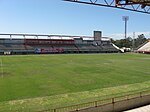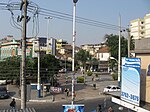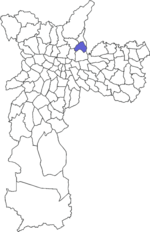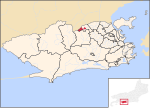Nova Iguaçu Volcano
The Nova Iguaçu Volcano ("Vulcão de Nova Iguaçu" in Portuguese) is located in the state of Rio de Janeiro, Brazil, in an area of volcanic rocks at the north-eastern border of the Mendanha massif. Klein and Vieira proposed the site to be an extinct volcano with a volcanic cone, volcanic crater, and volcanic bomb. Scientific journals have studied the volcanic geology of the area, identifying the rocks of volcanic appearance as constituted of subvolcanic intrusive rock bodies. The Nova Iguaçu volcano theory is now extinct in academic communities, but the myth continues in sightseeing promotion groups. Recent research revealed that volcanic eruptions did occur in the Nova Iguaçu region. After the eruptions, an intense uplifting and consequent regional denudation took place. The cones, craters, lavas, pyroclastic flow deposits, and volcanic bombs have been washed away in the strong tropical erosion of this region, exposing the underlying geologic structure. The Municipal Park is underlain by the geologic bodies corresponding to the magma chamber (composed of syenite and trachyte) and subvolcanic conduit (made up of pyroclastic rocks) of a depth of 3 kilometers, such as pyroclastic dikes. That is, no extinct volcano is present at Nova Iguaçu. The outcrops are world-rare geological phenomena that expose the underground geologic structures of the volcanic area.
Excerpt from the Wikipedia article Nova Iguaçu Volcano (License: CC BY-SA 3.0, Authors).Nova Iguaçu Volcano
Rua Pedro Martins D'Ávila, Nova Iguaçu Bairro da Luz
Geographical coordinates (GPS) Address Nearby Places Show on map
Geographical coordinates (GPS)
| Latitude | Longitude |
|---|---|
| N -22.766944444444 ° | E -43.466388888889 ° |
Address
Rua Pedro Martins D'Ávila
26260-045 Nova Iguaçu, Bairro da Luz
Rio de Janeiro, Brazil
Open on Google Maps








